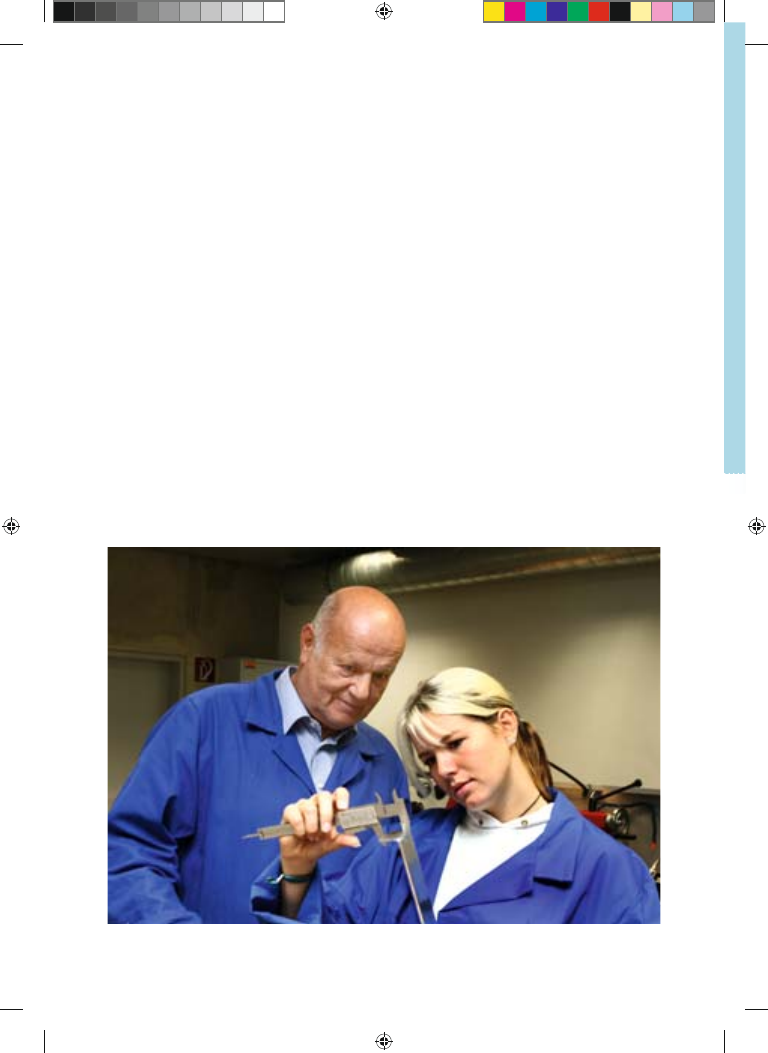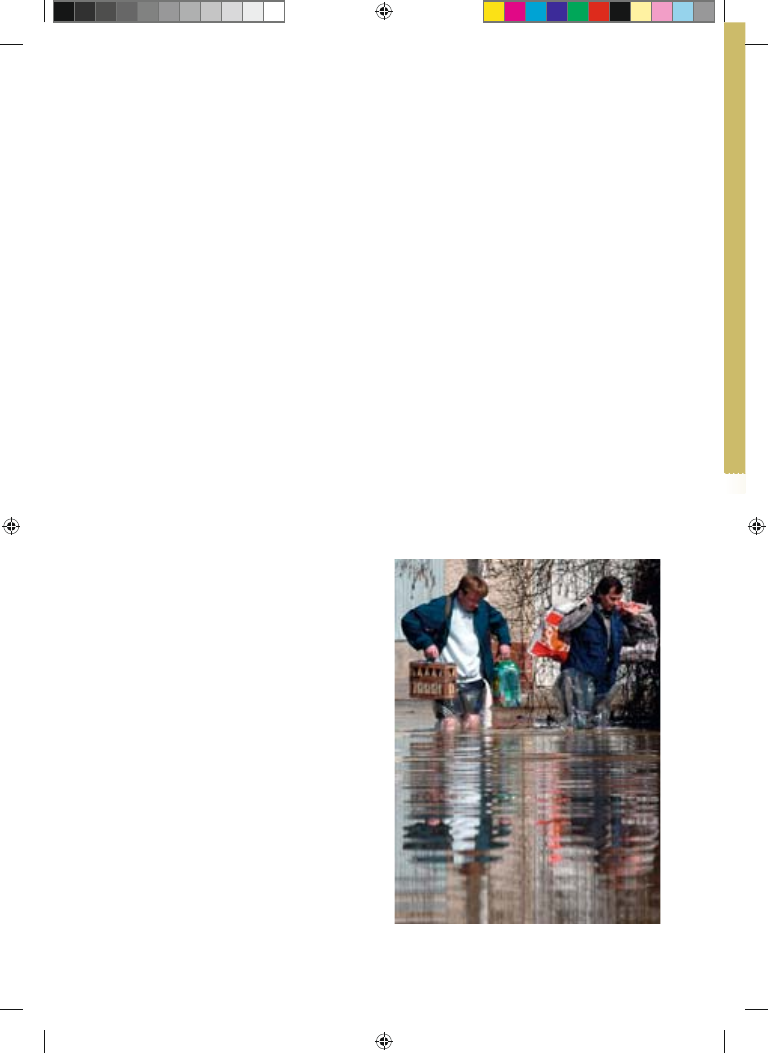ВУЗ: Не указан
Категория: Не указан
Дисциплина: Не указана
Добавлен: 07.04.2021
Просмотров: 571
Скачиваний: 1

34
H
O
W T
H
E EU
R
O
P
E
A
N
U
N
IO
N W
O
R
K
S
T
H
E C
O
M
M
IT
T
E
E O
F
T
H
E R
E
G
IO
N
S
: V
O
IC
E O
F
R
E
G
IO
N
A
L
A
N
D LO
C
A
L G
O
V
E
R
N
M
E
N
T
There are four political groups: the European
People’s Party, the Party of the European So-
cialists, the Alliance of Liberals and Demo-
crats for Europe, and the Union for Europe of
the Nations–European Alliance.
The President of the CoR is elected for a two-
year term from among its members. Michel
Delebarre was elected President in 2006.
What does the Committee do?
The role of the Committee of the Regions is
to put forward the local and regional points
of view on EU legislation. It does so by is-
suing reports, or ‘opinions’, on Commission
proposals.
The Commission and the Council must con-
sult the CoR before EU decisions are taken
on matters that concern local and regional
government. This can be employment policy,
the environment, education, culture, voca-
tional training and youth, energy, transport,
telecommunications, and public health.
This list is not exhaustive. The Commission,
the Council and the European Parliament are
free to consult the CoR on other issues. For
its part, the Committee can adopt opinions
on its own initiative and present them to the
Commission, Council and Parliament.
How is the Committee’s work
organised?
Each year the Committee of the Regions holds
fi ve plenary sessions, during which its general
policy is defi ned and opinions are adopted.
There are six ‘commissions’ to consider dif-
ferent policy areas and prepare the opinions
to be debated in the plenary sessions.
Access to vocational training and lifelong learning across Europe is a primary concern of the
Committee of the Regions.
© Bilderbo
x
How the EU works_V5.indd Sec9:34
How the EU works_V5.indd Sec9:34
5/11/07 14:49:38
5/11/07 14:49:38
The European Investment Bank (EIB) was set
up in 1958 by the Treaty of Rome. Its main
role is to lend money for projects of European
interest, such as rail and road links, airports,
or environmental schemes. It also provides fi -
nance for small business investment in the EU
and for economic development in candidate
countries and the developing world.
Philippe Maystadt became President of the
EIB in January 2000.
What does the Bank do?
The EIB is a non-profi t-making, self-fi nancing
institution, independent of the EU budget. It
is fi nanced through borrowing on the fi nan-
cial markets. The Bank’s shareholders — the
member states of the European Union —
subscribe jointly to its capital, each country’s
contribution refl ecting its economic weight
within the Union.
This backing by the member states gives the
EIB the highest possible credit rating (AAA)
on the capital markets, where it can therefore
raise very large amounts of capital on very
competitive terms. This in turn enables the
bank to invest in projects of public interest
that would otherwise not get the money — or
would have to borrow it more expensively.
The projects in which the Bank invests are
carefully selected.
Its priorities in the EU are to support:
•
cohesion and convergence,
•
small and medium-sized enterprises,
•
environmental sustainability,
•
innovation,
•
development of trans-European transport
networks, and
•
sustainable, competitive and secure energy.
Outside the EU, the EIB supports EU develop-
ment and cooperation policies in candidate
and potential candidate countries, countries
around the Mediterranean and in eastern
35
H
O
W T
H
E EU
R
O
P
E
A
N
U
N
IO
N W
O
R
K
S
T
H
E
E
U
R
O
P
E
AN
I
N
VE
S
T
M
E
NT
B
A
N
K
: F
INAN
C
IN
G
E
C
O
N
O
M
IC
D
E
VE
L
O
P
M
E
N
T
The European
Investment Bank:
fi nancing economic
development
KEY FACTS
ROLE //
Finances economic development
MEMBERS //
The EU member states
Board of Directors 28, Management Committee 9
ADDRESS //
100, Boulevard Konrad Adenauer, L-2950 Luxembourg
TEL. //
(352) 43 79-1
INTERNET //
www.eib.org
How the EU works_V5.indd Sec10:35
How the EU works_V5.indd Sec10:35
5/11/07 14:49:40
5/11/07 14:49:40

36
H
O
W T
H
E EU
R
O
P
E
A
N
U
N
IO
N W
O
R
K
S
T
H
E
E
U
R
O
P
E
AN
I
N
VE
S
T
M
E
NT
B
A
N
K
: F
INAN
C
IN
G
E
C
O
N
O
M
IC
D
E
VE
L
O
P
M
E
N
T
Europe (including Russia) which are covered
by the EU’s neighbourhood policy, and coun-
tries in Africa, the Caribbean, the Pacifi c, Asia
and Latin America. Lending to these countries
focuses on:
•
private sector development,
•
infrastructure development,
•
security of energy supplies, and
•
environmental sustainability.
Finally, the EIB is majority shareholder in
the European Investment Fund, with which
it forms the ‘EIB Group’. The Fund invests
in venture capital and provides guarantees
for small and medium-sized enterprises. It
does not lend directly to businesses or invest
directly in fi rms. Instead, it works through
banks and other fi nancial intermediaries,
providing them with guarantees to cover their
loans to small businesses.
The Fund is active in the member states of
the European Union and in countries which
are candidates for membership.
How is the Bank’s work
organised?
The EIB is an autonomous institution. It makes
its own borrowing and lending decisions on
the merits of each project and the opportun-
ities offered by the fi nancial markets. Each
year, it presents a report on all its activities.
The Bank cooperates with the EU institutions.
For example, its representatives take part in
committees of the European Parliament, and
the President of the EIB attends the Council
meetings when the economics and fi nance
ministers of the EU countries meet.
The Bank’s decisions are taken by the follow-
ing bodies.
Æ
The Board of Governors consists of
ministers (normally the fi nance ministers)
from all the member states. It defi nes the
Bank’s general lending policy, approves
the balance sheet and annual report,
authorises the Bank to fund projects
outside the EU and decides on capital
increases.
Æ
The Board of Directors approves lending
and borrowing operations and it makes
sure that the EIB is properly managed. It
consists of 28 directors — one nominated
by each EU member state and one by the
European Commission.
Æ
The Management Committee is the
Bank’s full-time executive. It handles the
EIB’s day-to-day business. It has nine
members.
The European Investment Bank has lent the Czech
Republic money towards better flood protection.
© Belg
a
How the EU works_V5.indd Sec10:36
How the EU works_V5.indd Sec10:36
5/11/07 14:49:40
5/11/07 14:49:40
The European Central Bank (ECB) was set up
in 1998. It is based in Frankfurt (Germany). Its
job is to manage the euro — the EU’s single
currency, and to safeguard price stability for
the more than two-thirds of the EU’s citizens
who use the euro. The ECB is also responsible
for framing and implementing the monetary
policy of the euro area.
To carry out its role, the ECB works with the
‘European System of Central Banks’ (ESCB).
Countries which have so far adopted the euro
collectively make up the ‘euro area’. The cen-
tral banks of these countries, together with
the European Central Bank, make up what is
called the ‘Eurosystem’.
The ECB works in complete independence.
Neither the ECB, the national central banks
of the ESCB, nor any member of their de-
cision-making bodies can ask for or accept
instructions from any other body. The EU
institutions and the governments of the EU
countries must respect this principle and must
not seek to infl uence the ECB or the national
central banks.
Jean-Claude Trichet became President of the
ECB in November 2003.
What does the Bank do?
One of the ECB’s main tasks is to maintain
price stability in the euro area, so that the euro’s
purchasing power is not eroded by infl ation.
The ECB aims to ensure that the year-on-year
increase in consumer prices is less than, but
close to, 2% over the medium term.
It does this by setting benchmark interest
rates based on the analysis of economic and
monetary developments. It raises interest
rates if it wants to curb infl ation, and low-
ers them if it thinks the risk of infl ation is
limited.
37
H
O
W T
H
E EU
R
O
P
E
A
N
U
N
IO
N W
O
R
K
S
T
H
E E
U
R
O
P
E
A
N
C
E
N
T
R
A
L B
A
N
K
: M
A
N
A
G
IN
G
T
H
E E
U
R
O
KEY FACTS
ROLE //
To maintain price stability in the euro area and to conduct
monetary policy
MEMBERS //
Governing Council 19, General Council 29,
Executive Board 6
ADDRESS //
Kaiserstrasse 29, D-60311 Frankfurt am Main
TEL. //
(49) 691 34 40
INTERNET //
www.ecb.eu
The European
Central Bank:
managing the euro
How the EU works_V5.indd Sec11:37
How the EU works_V5.indd Sec11:37
5/11/07 14:49:42
5/11/07 14:49:42
38
H
O
W T
H
E EU
R
O
P
E
A
N
U
N
IO
N W
O
R
K
S
T
H
E E
U
R
O
P
E
A
N
C
E
N
T
R
A
L B
A
N
K
: M
A
N
A
G
IN
G
T
H
E E
U
R
O
How is the Bank’s work
organised?
The Executive Board of the ECB is responsible
for implementing monetary policy, as defi ned
by the Governing Council (see below), and
for giving instructions to the national central
banks. It also prepares the Governing Council
meetings and is responsible for the day-to-day
management of the ECB.
It comprises the President of the ECB, the
Vice-President and four other members, all
appointed by common agreement of the
presidents or prime ministers of the euro
area countries. The Executive Board mem-
bers are appointed for a non-renewable
term of eight years.
The Governing Council is the European Cen-
tral Bank’s highest decision-making body. It
comprises the six members of the Executive
Board and the governors of the central banks
of the euro area. It is chaired by the President
of the ECB. Its primary mission is to defi ne
the monetary policy of the euro area, and, in
particular, to fi x the interest rates at which
commercial banks can obtain money from
the ECB.
The General Council comprises the ECB’s
President and the Vice-President and the
governors of the national central banks of all
27 EU member states. The General Council
contributes to the ECB’s advisory and co-
ordination work and helps prepare for the
further enlargement of the euro area.
EU countries using the euro from January 2008: Austria, Belgium, Cyprus, Finland, France, Germany,
Greece, Ireland, Italy, Luxembourg, Malta, the Netherlands, Portugal, Slovenia and Spain.
EU countries not using the euro: Bulgaria, the Czech Republic, Denmark, Estonia, Hungary, Latvia,
Lithuania, Poland, Romania, Slovakia, Sweden and the United Kingdom.
How the EU works_V5.indd Sec11:38
How the EU works_V5.indd Sec11:38
5/11/07 14:49:42
5/11/07 14:49:42